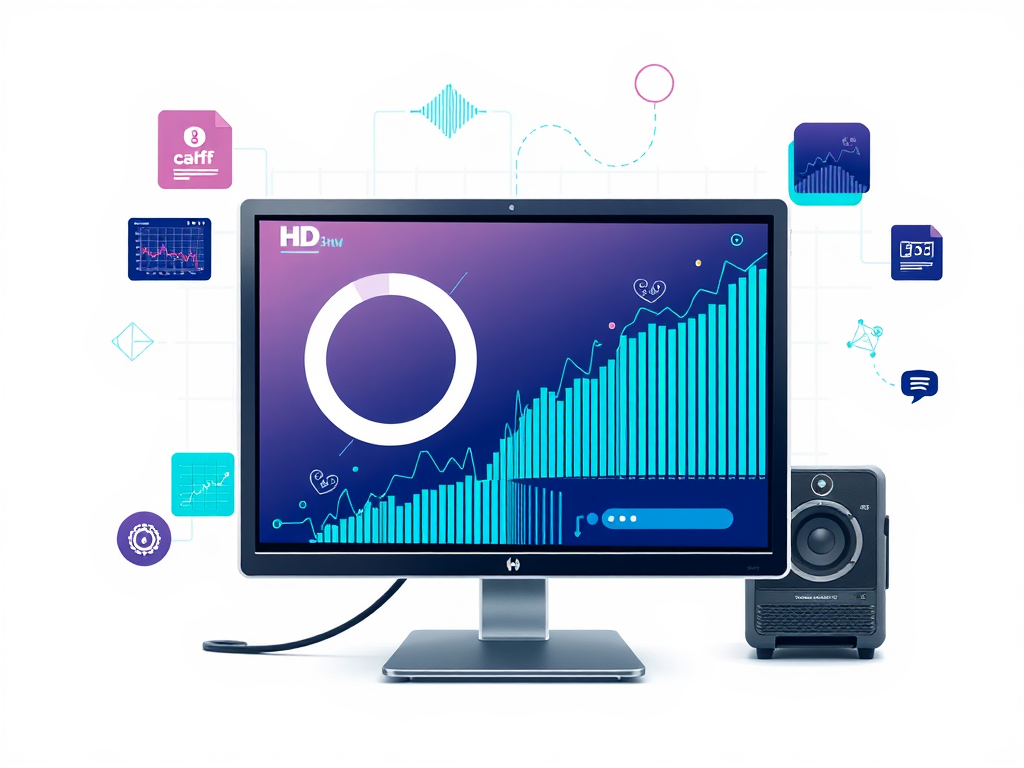How 5G Technology is Transforming UK Digital Advertising
5G technology is fundamentally reshaping UK digital advertising by enabling much richer ad experiences through its high-speed connectivity. Unlike previous networks, 5G’s increased data transfer rates allow advertisers to deliver high-definition, interactive video ads that seamlessly load without lag, significantly enhancing user engagement.
Additionally, the transformation extends to data capacity. With 5G technology’s enhanced bandwidth, brands can support real-time personalised advertising, processing vast amounts of user data almost instantaneously. This means adverts can be tailored dynamically to individual preferences, increasing relevance and effectiveness in the UK digital advertising arena.
Also to read : Create an engaging video storyboard in simple steps
Location-based targeting is another core impact of 5G’s capabilities. Advertisers can now leverage precise, real-time location data to deliver contextually relevant ads to consumers, boosting both engagement and conversion rates. This works hand-in-hand with emerging interactive ad formats, such as augmented reality (AR) overlays and immersive mobile experiences, which 5G technology enables by providing the speed and responsiveness necessary for seamless interactivity.
Together, these aspects highlight how 5G technology is a game-changer in transforming how UK digital advertising connects with audiences and drives business outcomes.
This might interest you : Exploring innovative iot marketing strategies adopted by uk businesses
How 5G Technology is Transforming UK Digital Advertising
Small text here.
The introduction of 5G technology is significantly reshaping UK digital advertising, driving a profound transformation in how brands connect with audiences. At its core, 5G offers lightning-fast connectivity that enables richer, more immersive ad experiences impossible with previous networks. This ultra-high speed allows video-heavy content and interactive ads to load instantly, improving user engagement and satisfaction.
Another key impact is in data capacity. 5G supports massive volumes of data transfer, which means advertisers can deliver personalised ads in real time with greater accuracy. This transformation empowers marketers to target consumers more effectively based on their behavior, location, and preferences.
Furthermore, 5G enables advanced location-based targeting. Ads can now respond dynamically depending on where the user is, unlocking vast potential for contextually relevant campaigns that drive immediate action. Emerging interactive formats such as augmented reality ads and real-time gamified promotions rely heavily on 5G’s capabilities, marking a new era of creativity in UK digital advertising.
In sum, 5G technology is not just a connectivity upgrade—it is a catalyst for innovation, vastly transforming how advertisers create, deliver, and optimise their messages. This transformation will only intensify as 5G adoption deepens across the UK.
Key Technical Advancements of 5G and Their Advertising Applications
5G advancements bring ultra-low latency, drastically reducing the delay between user action and network response. This is a game-changer for mobile and video ads, enabling smooth, real-time interactive experiences that engage users instantly. Advertisers can now deploy dynamic content that adapts on-the-fly without buffering or lag, enhancing the overall effectiveness of campaigns.
Increased bandwidth is another major 5G advancement. It allows delivery of large, high-quality creatives such as 4K videos and complex animations, which were previously restricted by network limitations. This enables richer storytelling and stronger brand presence within UK digital advertising, resulting in more impactful audience connections.
Edge computing further supports these advancements by processing data closer to users. This reduces latency even more and accelerates ad delivery and real-time analytics. Advertisers gain immediate insights into campaign performance, enabling them to optimize ads quickly and efficiently on a large scale.
Together, these technical developments empower advertisers to harness innovative digital ad formats that captivate audiences in ways never before possible. Understanding how to leverage 5G advancements is vital to fully realizing their transformative impact on UK digital advertising.
How 5G Technology is Transforming UK Digital Advertising
Small text here.
The transformation driven by 5G technology in UK digital advertising centers on its ability to enable richer and more dynamic ad experiences. 5G’s ultra-high-speed connectivity drastically reduces loading times, allowing interactive video ads and high-definition creatives to run smoothly on mobile devices. This means advertisers can craft immersive campaigns without frustrating delays that previously hindered user engagement.
Moreover, the enhanced data capacity of 5G technology supports real-time personalised advertising by processing large volumes of user data instantaneously. This capability revolutionises targeting precision, delivering ads tailored to individual behaviours and preferences, increasing relevance and effectiveness.
An important impact of 5G in UK digital advertising lies in its support for location-based targeting. Advertisers can now deploy geo-specific ads with immediate responsiveness, leveraging real-time location data to enhance contextual relevance. Combined with emerging interactive ad formats like augmented reality overlays and gamified promotions, 5G technology empowers brands to create innovative, engaging content that captures consumer attention more effectively than ever before.
These technical advances collectively underscore the profound impact of 5G technology on UK digital advertising, redefining how messages are delivered and experienced by audiences across the country.
How 5G Technology is Transforming UK Digital Advertising
Small text here.
5G technology is driving a profound transformation in UK digital advertising by unlocking new possibilities for richer ad experiences. Its exceptionally high-speed connectivity allows advertisers to deliver complex, high-definition video content and interactive ads without buffering delays. This improvement addresses common frustrations with slow-loading ads and significantly elevates user engagement.
Enhanced data capacity further amplifies 5G’s impact. By transferring vast amounts of data instantly, 5G supports real-time personalised advertising. Advertisers can now analyse user behavior, preferences, and contextual factors on the fly, tailoring ads dynamically to each consumer. This personalised delivery increases relevance, making campaigns more effective in capturing attention.
Moreover, 5G advances location-based targeting with high precision and immediacy. Advertisers can use this capability to serve ads that respond in real time to a user’s environment—whether proximity to stores or local events—boosting conversion rates. Combining these advancements with emerging interactive ad formats like augmented reality overlays creates immersive experiences that engage UK consumers on a deeper level.
Together, these facets illustrate how 5G technology is not just improving connectivity but fundamentally transforming how brands design, deliver, and optimise advertising in the UK digital market.
How 5G Technology is Transforming UK Digital Advertising
5G technology’s high-speed connectivity revolutionises UK digital advertising by enabling richer, more immersive ad experiences. Its lightning-fast data transfer allows complex, interactive video ads and high-definition creatives to load nearly instantly, eliminating lags that previously disrupted engagement.
The transformation goes beyond speed. 5G’s vastly increased data capacity supports real-time personalised advertising. Advertisers can instantly process large user datasets to tailor ads dynamically based on individual preferences, browsing habits, and contextual signals. This precision boosts ad relevance and effectiveness, resulting in higher consumer interaction rates.
Location-based targeting gains significant impact with 5G. Advertisers leverage precise, real-time geo-data to deliver contextually relevant ads that reflect a user’s environment, lifestyle, or local events. The immediacy and accuracy 5G provides empower marketers to enhance conversion through timing and context-sensitive messaging.
Moreover, emerging interactive ad formats such as augmented reality overlays, gamified promotions, and immersive mobile experiences rely heavily on 5G’s speed and low latency. These formats transform static ads into engaging content that encourages active participation. Collectively, these capabilities underline the profound transformation 5G technology brings to UK digital advertising, reshaping how brands engage audiences and drive measurable results.
How 5G Technology is Transforming UK Digital Advertising
Small text here.
5G technology is a cornerstone in the transformation of UK digital advertising, primarily through its high-speed connectivity. This speed facilitates the delivery of richer ad experiences by enabling instantaneous loading of data-heavy content, such as immersive video and interactive creatives. For advertisers, this means enhanced engagement is achievable without the friction of slow buffering or delays.
Beyond speed, 5G’s enhanced data capacity supports real-time personalised advertising on a scale previously unattainable. Advertisers can now process vast streams of user data near-instantaneously, allowing ads to be dynamically tailored to consumer behaviour and preferences. This capability dramatically improves ad relevance, which in turn boosts conversion rates.
A vital component of 5G’s impact lies in its ability to harness location data with high precision. Location-based targeting benefits from 5G’s improved responsiveness, enabling brands to serve geo-specific, contextually relevant ads that resonate immediately with users based on their environment. The fusion of this targeting with emerging interactive ad formats—such as augmented reality overlays and gamified promotions—exemplifies the new possibilities 5G technology brings to UK digital advertising’s continued evolution.
Challenges and Considerations for UK Advertisers Adopting 5G
Small text here.
Despite the transformative potential of 5G technology in UK digital advertising, several challenges temper its adoption. One significant obstacle is the uneven 5G rollout across the UK, with infrastructure gaps limiting consistent ultra-high-speed connectivity in rural and some urban areas. This disparity affects advertisers’ ability to deploy uniform campaigns nationwide, potentially fragmenting audience reach and impact.
Privacy concerns are another critical consideration. Enhanced real-time personalised advertising, enabled by 5G’s vast data capacity, increases the collection and processing of user information. Advertisers must navigate stringent UK data protection laws, ensuring transparency and user consent to mitigate risks of data misuse while maintaining consumer trust.
Furthermore, the rapid evolution of consumer expectations driven by 5G’s capabilities requires constant strategy adaptation. Advertisers must rethink creative approaches to leverage low latency and high bandwidth effectively, balancing technological innovation with relevance and engagement.
Addressing these challenges involves strategic collaboration between telecom operators, regulators, and marketers to improve infrastructure, enforce robust data safeguards, and craft flexible advertising models. Success depends on understanding both the risks of 5G adoption and opportunities it presents to enhance targeting and interactive formats within the evolving UK digital advertising landscape.
How 5G Technology is Transforming UK Digital Advertising
Small text here.
5G technology’s transformation of UK digital advertising is driven primarily by its ability to support real-time personalised advertising on an unmatched scale. Advertisers can instantly analyse vast datasets, enabling highly precise targeting that dynamically adapts to user behaviour and preferences. This level of personalisation not only boosts engagement but also improves ad effectiveness across campaigns.
Another major impact is 5G’s high-speed connectivity, which enables far richer ad experiences by allowing data-heavy formats like high-definition video and interactive content to load instantly. This seamless delivery removes previous barriers such as buffering, enhancing user satisfaction and interaction rates.
Location-based targeting benefits significantly from 5G technology’s responsiveness. Advertisers can deploy geo-specific, context-aware ads that adjust in real time to a user’s environment. This immediate relevance encourages better conversion outcomes and deeper consumer connections.
Furthermore, emerging interactive ad formats—such as augmented reality overlays and gamified promotions—rely heavily on 5G’s rapid data transfer and low latency to function smoothly. Together, these advances redefine UK digital advertising, enabling brands to engage audiences with innovative, immersive content that was not possible before.







